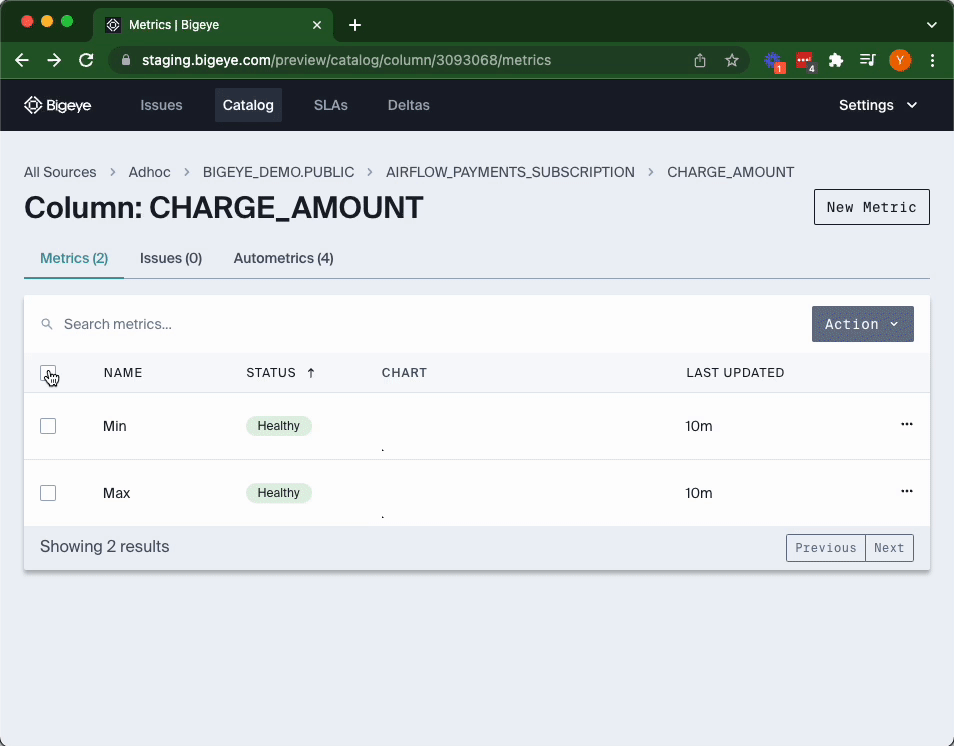Thresholds
Thresholds determine at what point a metric indicates a problem. Once a metric has exceeded its thresholds in either direction, Bigeye will send an alert to the contacts specified in the metric itself or in any SLAs that the metric is a part of.
No threshold
This indicates that the metric will never send a notification. This setting can be useful for tracking debugging-level information that won't detect an issue on its own, but may be useful when another metric on the same table is alerting.
Autothresholds
All Autometrics are deployed with autothresholds computed from historical data using machine learning models. You can read more about how you can give feedback to the machine learning models on the Issues page. Autothresholds require a minimum of 5 days of data to produce thresholds. Tables with Row Creation Time enabled can backfill most metrics in order to immediately produce thresholds.
Autothreshold sensitivity can be adjusted after metric creation in case the thresholds set are alerting too often or aren't alerting often enough. If the threshold is set to wide or extra wide, it will increase the bounds and produce fewer alerts; thresholds set too narrow will decrease the bounds and alert more frequently.
To adjust autothreshold sensitivity, select the relevant metrics under Catalog. Then select Edit from the the Action dropdown menu.

Constant thresholds
Constant thresholds are useful if there is a specific business logic that can be asserted about the values in the column. For example, if you know that a number stored in the database should be a percentage, the numeric value would need to be between 0 and 100 at all times.
The metric will alert if the value computed is outside of the specified bounds. Either of the bounds can be specified, or both.

Relative thresholds
Relative thresholds are designed for doing comparisons to previous values, such as week over week comparisons. The days to look back setting determines how far back to compare the current values. The alert if up/down % input box allows you to tell Bigeye how much of a percent deviation is acceptable.

Freshness schedule thresholds
Freshness schedule thresholds are designed for infrequently-updated tables that should be loaded on a schedule.
The update schedule determines when the lowest point of the check should be, specified in cron syntax.
The timezone is specified either as full name (America/Los Angeles), hour offset (-0800), or abbreviation (PST).
Delay at update is the minimum value that the check will have, specified in hours.
The threshold will increase from that point until the next execution of the cron schedule.

Example:

Updated 3 months ago
